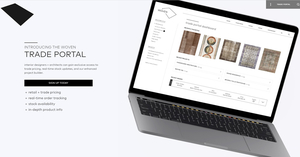
Managing content used to be fairly straightforward. Write the content, post it on your website, add it to another one or two websites, maybe send out an email notice about it, and you’re done. Multi-channel content management wasn’t on anyone’s mind.
Today’s World Demands Skilled Multi-Channel Content Management
Today, content management is oh so different. Content distribution channels/options have proliferated significantly—and will continue to do so. Everyone seeks information all the time. The appetite for content seems insatiable. Businesses and consumers live, breathe, and rely on information (the more easily digested the better), and we find it in many different places and formats. We access content/information on many different devices. Information moves and morphs fast.
Moreover, content is no longer simply words on a page. It’s images, video, graphics, multimedia, music, podcasts, white papers, product sheets, policy documents, manuals, and more. True, these items are content. But many are also “digital assets,” highly important, transactional, functional, artistic digital content that companies rely on to transact business, educate markets, train employees, solicit input/feedback, reveal product details and proprietary information, etc.
Affording access and delivering a diverse mix of content and digital assets to the right parties at the right time, regulating access, validating user authority, and ensuring a secure online user environment is all part of multi-channel content management. The business process of organizing, storing, releasing, and retrieving is called “digital asset management, or DAM.” DAM often requires archive creation and development of an infrastructure that preserves and manages digital assets, including a search function allowing permitted users to find and retrieve the assets.
Effective commerce depends on and is driven by information and digital-asset flow, access, security, and regulation. Content output options will continue to increase along with persistently transforming digital technology. Yet, given the complexities of today’s digital content distribution, content managers can easily stumble when striving to get their content and digital assets to their audience and users in the right way at the right time.
Managing content across multiple channels is now a core element of any digital business transformation. Managingcontent and digital assets to ensure their effective and proper access, use, and dissemination requires a strategy and the technology to implement that strategy. Multi-channel publishing is an increasingly important part of enterprise publishing strategy.
Maximizing audience potential today means promptly disseminating your relevant content to your audience(s) where they’re most likely to find it and use it, with as little effort and time, and as few mistakes, as possible. Content today must be accessible to readers/customers through the channels that make it easiest for them to readily consume, and safest for security purposes.
This means delivering content effectively and simultaneously to multiple websites, mobile devices of varying sizes and capabilities, tablets, social media, secure platforms, etc. Technical writers and content creators must today have the means of delivering their writing/content to various electronic formats. Without this, the message of content can’t make the intended impact or serve its intended function. It can’t reach the complete audience.
Technical Capabilities are Essential to Multi-Channel Content Management
Publishing content and digital assets in many different formats to different endpoints at the same time is a challenge. It requires the right tools for the task. If you want your content competently delivered to your audiences, it must be in the right format, available at the right time, and released through the right channel in the right way. To get this multi-channel content management right, you need the right system.
Web platforms now act as information/content hubs and must be capable of seamlessly delivering an enterprise’s content to readers in many ways at the same time. To make this feasible for a company, its web platform must also enable company personnel to quickly direct, reformat, and move content—through multiple channels, to multiple device types, for multiple purposes.
You must have the technical resources to facilitate the multi-channel content dissemination task. Delivering content to different devices requires a system that can streamline the delivery process and ensure the content is delivered in properly matched electronic formats to the devices it lands on. This requires a back end within your web presence management system designed to capably manage the task for you — automated content dissemination management. As mobile devices become increasingly diverse and sophisticated, content producers need specialized mobile delivery tools such as mobile middleware, notifications, and device adaptation to properly service those devices.
A content producer’s/disseminator’s online web-presence system must also be capable of adapting and keeping up with emerging digital content-distribution mechanisms.
Adrecom’s Multi-Channel Content Management solution, the CMS Suite, does all of this. It helps companies optimize their creation and distribution of content-marketing campaigns. It permits them to manage their content centrally, readily controlling how and where content is used, which selected channels it can be released through. It enables you to intelligently repurpose content, strategically repeat content releases, define release parameters, and add new publication channels. Publish to print, web, tablets, mobile, and social from within one system, and automate repetitive tasks.
This proactively gets the content into the hands of the right users in the right way. Maximize your content’s utility and impact.
Call Adrecom today at (310) 212-7920 to learn more.




